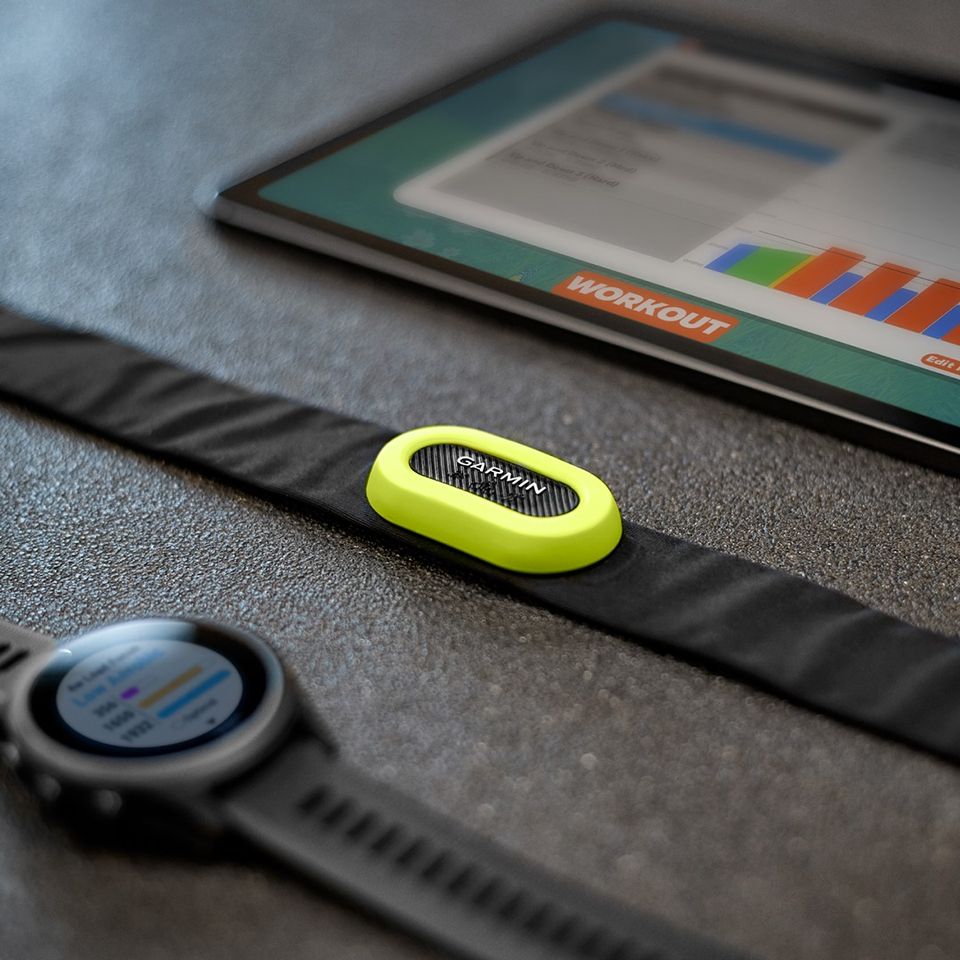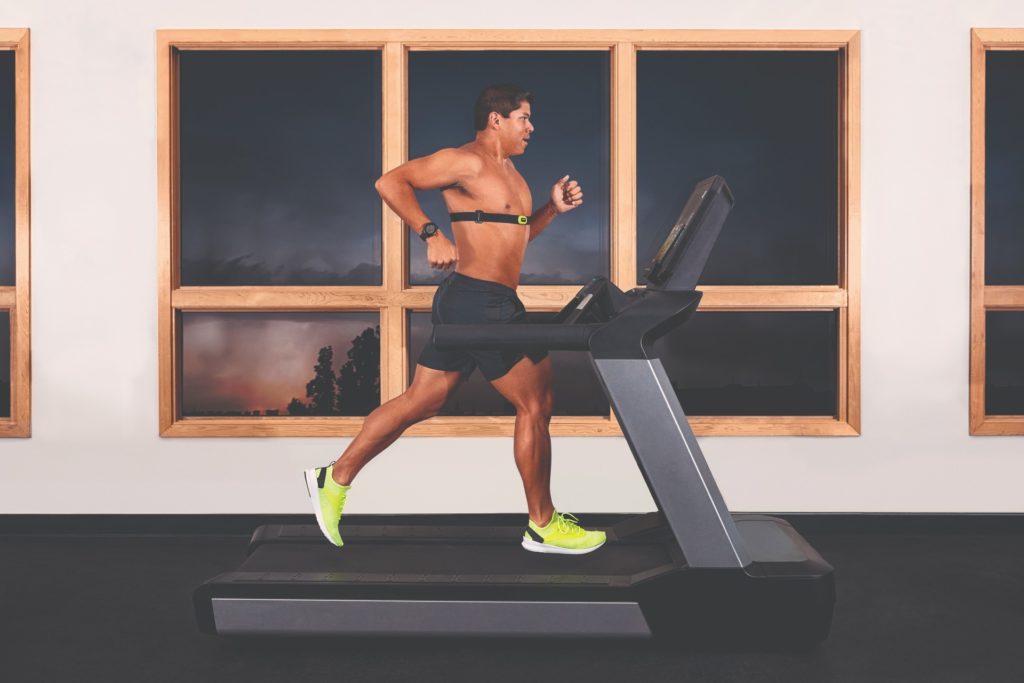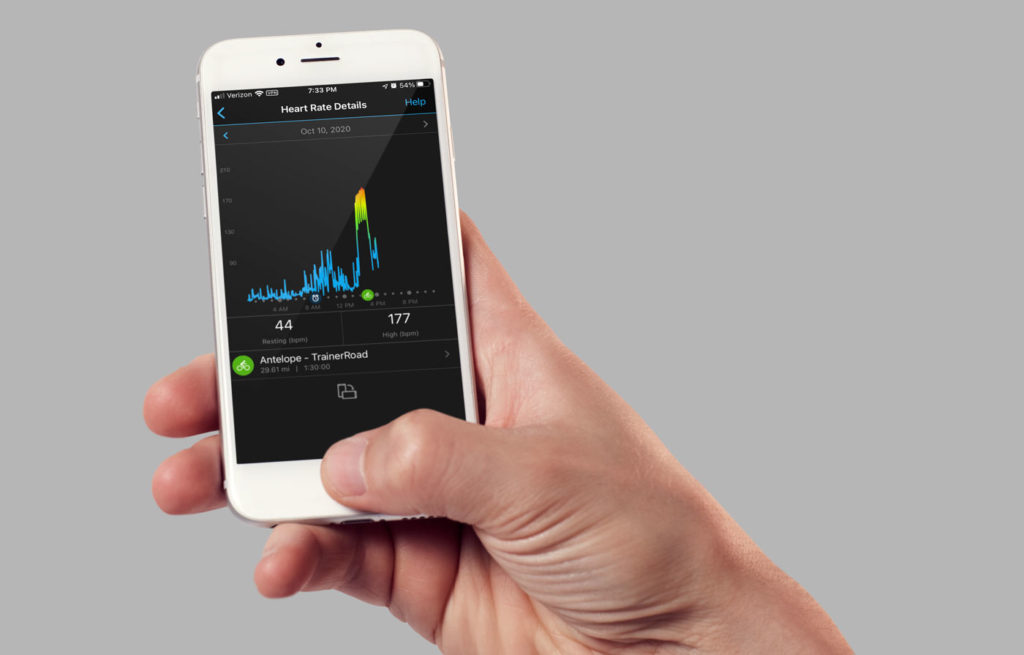“Would you like fries with that?”
We’re all familiar with that phrase, and the answer to it depends on whether it is before or after our first big race of the year.
No matter what fast food restaurant you go to, they will always be trying to sell their combo deal or value size option of choice. It’s called “up selling,” and it is a big money maker in the business.
In the sports tech market, the “up-sell” is not about adding additional items (“Would you like a heart rate monitor with your new GPS watch?”) but rather it is about adding features to convince you to buy that shiny new version of something you already have.
So the question is, is this worth trading my hard earned cash for something slightly newer or better?
Enter the HRM-Pro from the biggest brand in the wearables and navigation spaces, Garmin.

As the “Pro” moniker indicates, this is Garmin’s top of the line, all-in-one heart rate monitor (HRM). What is it that separates the Pro from the other Heart Rate Monitors you may have laying around?
A little comparison might help. There are really 4 HRM’s in Garmin’s line up: HRM-Run, HRM- Tri/Swim, HRM-Dual, and now the HRM-Pro. (Note: The old “Premium Heart Rate Strap” has been discontinued.) Here are the highlights of each one:
HRM-Run — ANT+ connection only, Running Dynamics
HRM-Dual — Dual ANT+ and Bluetooth (BLE) transmission of HR Data (No running dynamics)
HRM-Tri/Swim — ANT+ only, Running Dynamics, storage of HR data (when swimming or otherwise)
HRM-Pro — Dual ANT+ and Bluetooth (BLE), Running Dynamics, Storage of HR Data, and daily metric tracking
As you can see, in this buffet of features, the HRM-Pro is the only one that takes a taste of each item on the menu.
Previously, a runner would be fine with an ANT+ only HRM since it would connect to their watch just fine, and a cyclist didn’t need running dynamics since, you know, they weren’t running. A triathlete might want HR data from their swim as well as need the aforementioned Running Dynamics. Then came the evolution of indoor training.
Athletes needed bluetooth to connect to their computers or phones without any extra dongles to enable ANT+ connections. So Garmin answered with the HRM-Dual… but where were the other swim and run features?
I am sure there were athletes out there with a closet full of Heart Rate Monitors, each with their own use case. But what if there were one HRM to rule them all?
If that’s the boat in which you find yourself, the HRM-Pro might be for you. The multisport athlete who wants all the extra features, the data storage, and the ability to connect to a device via bluetooth. So how does this strap actually perform? Does it deliver?
Yes. Yes it does. Here’s my experience:
Running Dynamics
We’ll start with the easiest first. Garmin has been transmitting running dynamics from it’s Heart Rate Straps for years! The original HRM-Run debuted in 2014. Not much has changed in those years and the data seems to be solid.
For those not familiar with the Running Dynamics standard, the HRM will measure body movement while running to send various data points to a Garmin (or other supported watch). Those are cadence, vertical oscillation, stride length and ground contact time. Theoretically, by measuring and improving these numbers a runner can gain greater efficiency in their running.

Dual ANT+ and BLE Connectivity
The newest offering by Garmin, introduced in the HRM-Dual, is the ability to transmit over Bluetooth and ANT+ simultaneously. You can connect up to 2 devices via Bluetooth (an unlimited number via ANT+). This comes in handy as many people will do indoor workouts with 2 programs at once (Zwift and TrainerRoad usually.)
In my daily use, I’ve really been happy to get my Heart Rate data into the TrainerRoad app for my indoor bike workouts. The other issue I would run into is that the HR data wouldn’t show up in Garmin connect in my 24×7 HR section when it was recorded in TrainerRoad. The HRM-Pro solves that in 2 ways. The first is that I can connect it to my watch via ANT+ while doing the workout. The second is through direct upload to Garmin Connect (more on that later.) This is probably the single biggest thing for me as I’ve been holding on to my old HRM-Run for far longer than I probably should have!
Stored Data
The next feature that the HRM-Pro picks up is the ability to store HR data like the HRM-Tri/Swim does. ANT+ and Blutetooth can’t transmit more than a few inches in the water, and even in open air the range is measured only in feet. This brings up 2 use cases that could come in handy for some athletes: swimming and team sports.
The Heart Rate strap, when connected to a supported watch, will start recording when an activity is started on the watch. Even when connectivity is lost in the water or by leaving the watch on the sidelines, the data is stored locally and then transmitted back to the watch when the activity is finished. Garmin lines up all the timing in the data file so that when the information is reviewed after the fact, all the points line up!
The biggest thing here is the “supported watch” phrase. The whole list is available on a support page on Garmin’s website, but the surprise here is that my 6 year old Forerunner 920XT is supported! Basically all the multisport and adventure watches back to the 920xt and the Fenix 3 are all supported.
Daily Metric Sync
As mentioned before, this was a big annoyance for me previously. When I wear my VivoSmart 3 watch all day, but miss a few hours of data from swapping out to my other watch during a workout, it really isn’t a big deal. However, it doesn’t help my “Type-A” brain when I see that gap in Garmin Connect.
Thankfully, Garmin understands us athletes and provided a fix for us! The HRM-Pro can sync daily health metrics to Garmin Connect and smooth out the kinks in the system through it’s “TrueUp” feature. So now, when I use the HRM-Pro on an indoor bike ride, my VivoSmart can be sitting in another room charging and Garmin still captures that data (HR, steps, intensity minutes, etc.) and updates it in all my devices!
Conclusion
So, would you like fries with that?
I don’t recommend fries unless it’s after a big race, but the features Garmin delivers in the HRM-pro are worth a look. We have all had to settle for what we have available at some point. And we’ve all had to get over some small annoyances (like my 24×7 HR and fitness data issues). The solution used to be a combo deal of Heart Rate Straps. With the HRM-Pro, we now have the one strap with all the features!
The biggest hurdle will be the $129 price tag. I can’t tell you if it’s worth it for you, but if any of these pain points are an issue for you, the HRM-Pro can help make things run a little smoother.

